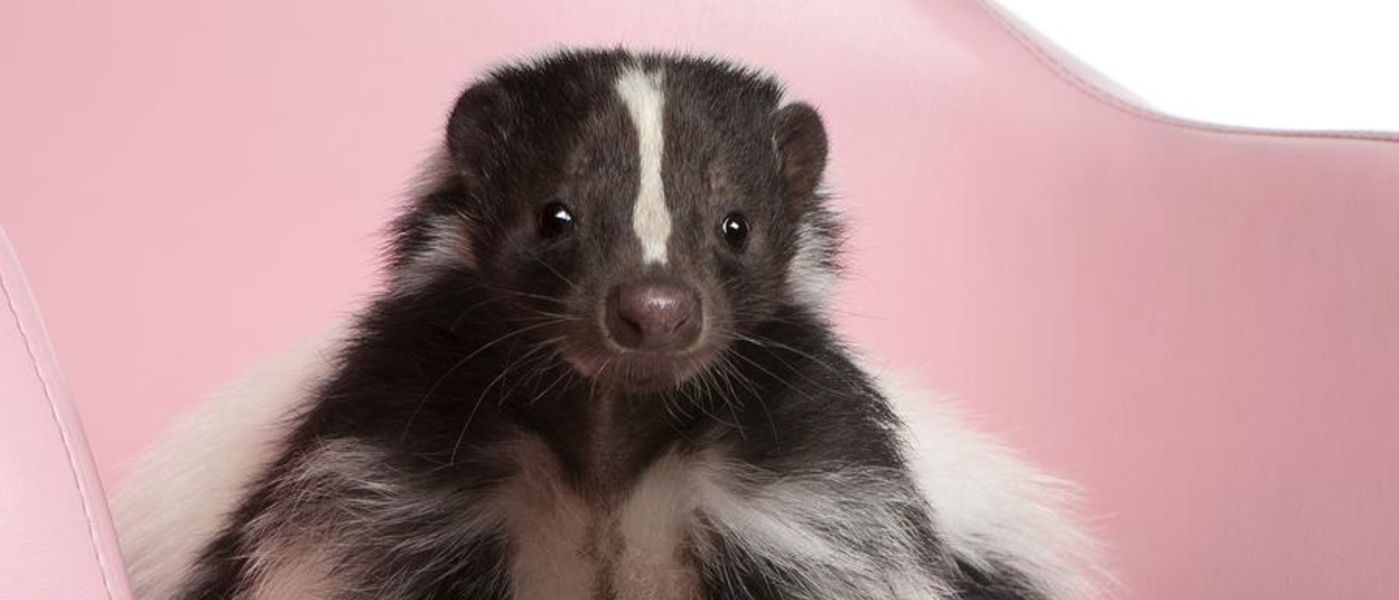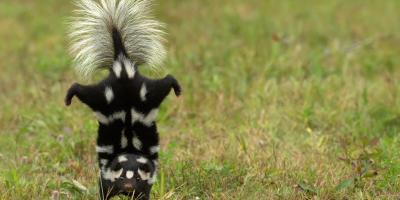Skunks, Love and Roadkill: It's February in New England

Love is in the air every February in New England and not because of Valentine’s Day. That aroma wafting from roadways, especially as soon as the sun goes down, is the unmistakable scent of skunks on the prowl.
While not exactly the eau de cologne we might associate with romance, this scent is a sure sign nonetheless that skunk mating season is upon us. As February turns to March, you might start to see (and smell) more of Pepé Le Pew and his pungent pals.
But how can you keep these pests from procreating on your property?
Striped Speed Bumps
Sadly, those black and white mounds appearing here and there on the highway are not striped speed bumps, but skunk roadkill. As mating season moves into full swing between late February and early March, skunks strike out in search of a breeding buddy.
The problem for homeowners presents when female skunks seek shelter indoors in order to birth their young. It’s not uncommon to find these mamas slinking around sheds, barns, garages, or hiding beneath porches and decks. So, how can you stop these skunks from meeting their match on your property?
Quick Ways to Curb the Appeal
When it comes to stopping skunks from stopping by, especially during mating season, here are some helpful tips to keep skunks off your property:
- Remove temptation:
Make sure that all trash and recycling bins are inaccessible to skunks and other pests. Each one requires a well-fitted lid to keep contents secured inside. - Be proactive:
Have you noticed other pests on your property? If so, they could be enough to attract skunks. For example, rodents make great skunks snacks. So do insect infestations! - Call time out on hide-and-seek:
Seal up any spots in and around your property where skunks might sneak in and shelter. - Strategize smart storage:
If you have household pets or take pleasure in feeding the birds that gather in your yard, make sure their food sources (pet food bowls, hanging bird feeders, etc.) are out of sight of skunks searching for sustenance.
Although simple, these tips are useful to keep in mind when you consider that most skunks forage for food within a less than one-mile radius, though occasionally they will travel up to five miles. Restrict any romantic dinners from your residence, otherwise, you could end up with a sustained skunk problem, with baby skunks making an appearance sometime between April and June.
Clear the air this Valentine’s Day by scheduling professional protection against skunks -- special delivery courtesy of JP Pest Services.



